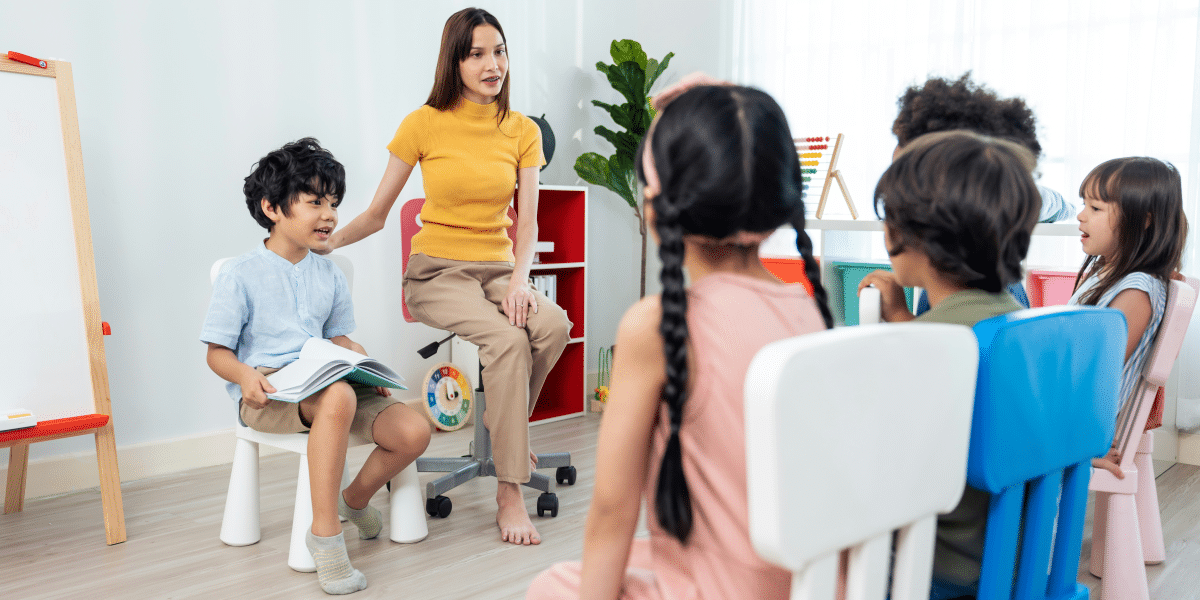By: PR Fueled
In today’s increasingly interconnected world, the ability to speak more than one language offers numerous advantages. Bilingualism not only broadens access to diverse cultures and enhances communication skills but also provides significant benefits that extend far beyond language proficiency. For children, being bilingual can lead to substantial cognitive, social, and academic gains that enrich their overall development. For more information on supporting your child’s development, you can visit this page offering child therapy services.
Bilingualism Enhances Cognitive Abilities
Bilingualism Enhances Executive Function
Bilingual children often excel in tasks that require advanced problem-solving, attention control, and multitasking abilities. The regular practice of switching between languages significantly enhances their executive function, which includes crucial mental skills such as working memory, flexible thinking, and self-control. This constant mental juggling strengthens their cognitive processes, making them more adept at managing daily tasks efficiently and achieving long-term goals.
Bilingualism Improves Memory
Learning and using multiple languages can greatly strengthen working memory. The practice of managing two linguistic systems enhances overall memory function, contributing to better academic performance and a more robust cognitive framework.
Bilingualism Promotes Greater Cognitive Flexibility
Bilingual individuals can transition between tasks more effortlessly and think more creatively. The experience of managing two languages enhances cognitive flexibility, allowing bilingual children to adapt to new situations and think outside the box.
Bilingualism Offers Social Advantages
Bilingualism significantly expands communication skills, allowing children to interact with a wider range of people. By speaking multiple languages, children can connect with individuals from diverse linguistic backgrounds, fostering friendships and broadening their social networks. This ability to communicate across language barriers not only enhances social interactions but also opens up opportunities for collaboration and cultural exchange. As bilingual children navigate different linguistic environments, they develop a deeper understanding of the nuances and subtleties of communication, which enhances their overall linguistic competence.
In addition to these benefits, bilingualism also enhances empathy. Bilingual individuals are often better at perspective-taking and understanding others’ emotions. The experience of switching between languages and navigating different cultural contexts requires a heightened awareness of others’ perspectives and feelings. This practice can significantly enhance a child’s ability to empathize with others, promoting stronger interpersonal relationships and emotional intelligence. Bilingual children learn to appreciate the complexity of human experiences and emotions, which helps them build deeper and more meaningful connections with those around them. This enhanced empathy is a crucial skill for personal and professional success, fostering more compassionate and effective communication.
Bilingualism Provides Academic Benefits
Bilingualism significantly improves literacy skills in children. Bilingual children tend to perform better in reading and writing in both languages. The cognitive processes involved in learning and using two languages reinforce each other, allowing skills developed in one language to transfer to the other. This dual-language proficiency leads to enhanced literacy abilities, as children gain a deeper understanding of language structures and vocabulary. As a result, bilingualism supports and strengthens literacy development, providing children with a robust linguistic foundation.
Furthermore, bilingualism leads to higher academic achievement. Studies consistently show that bilingualism is associated with higher test scores and greater academic success. Bilingual children often outperform their monolingual peers on standardized tests and other academic assessments. The cognitive and linguistic advantages gained from managing two languages contribute to overall academic excellence. These children typically demonstrate superior problem-solving skills, better attention control, and greater cognitive flexibility, all of which are crucial for academic success. By fostering bilingualism, we can equip children with the skills and advantages needed to excel in their educational pursuits.
Challenges of Bilingualism and How to Overcome Them
Addressing language mixing is an important aspect of fostering bilingualism. Language mixing, or using elements from both languages in the same sentence, can be a common challenge for bilingual children. To avoid confusion and promote clear language use, it is helpful to encourage the consistent use of both languages by setting clear contexts for each one. For example, you can designate specific times or settings for using each language, such as speaking one language at home and the other at school.
- Designate specific times or settings for using each language.
- Encourage consistent use of both languages.
- Help children understand the appropriate contexts for each language.
Maintaining proficiency in both languages requires regular practice and exposure. Ensuring that children continue to develop their skills in both languages involves creating opportunities for practice and engagement. Activities such as reading books, watching movies, and conversing with native speakers are excellent ways to immerse children in both languages. Additionally, enrolling children in bilingual education programs or cultural activities can provide structured and consistent exposure to both languages, helping to maintain and enhance their language skills. For more support in fostering your child’s development, you can explore psychological services.
- Engage in activities like reading books and watching movies in both languages.
- Encourage conversations with native speakers.
- Enroll children in bilingual education programs or cultural activities.
- Provide consistent and structured opportunities for language practice.
Final Remarks
The benefits of a bilingual brain extend far beyond mere language proficiency, encompassing profound cognitive, social, and academic advantages. Bilingualism not only enhances executive function, memory, and cognitive flexibility but also significantly broadens communication skills, cultural awareness, and empathy. These children often excel academically, achieving higher literacy skills and overall academic success. Encouraging bilingualism in children is a powerful investment in their future, equipping them with invaluable skills for personal and professional success. As the renowned linguist Frank Smith once said, “One language sets you in a corridor for life. Two languages open every door along the way.” By embracing and supporting bilingualism, we empower children to thrive in an increasingly interconnected world, unlocking their full potential and opening doors to endless opportunities.
Medical Disclaimer: This content is for informational purposes only and is not intended as medical advice, nor does it replace professional medical expertise or treatment. If you have any concerns or questions about your health, always consult with a physician or other healthcare professional.
Published by: Martin De Juan

















